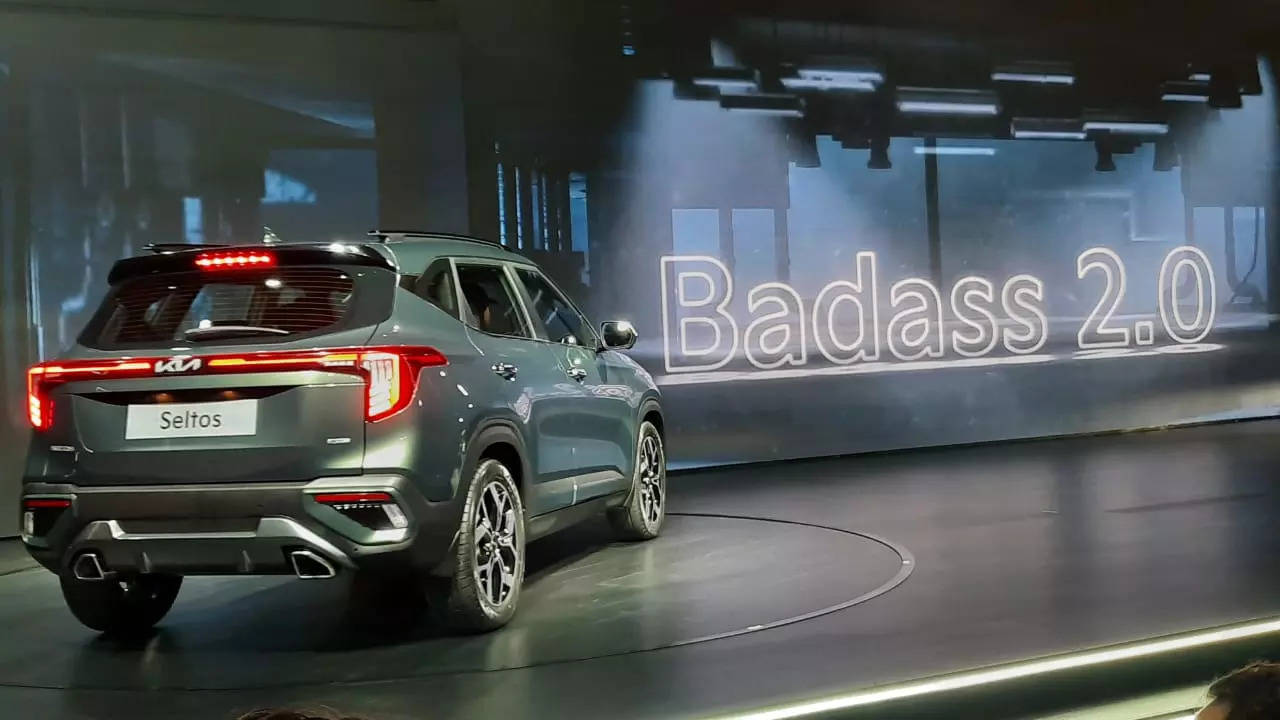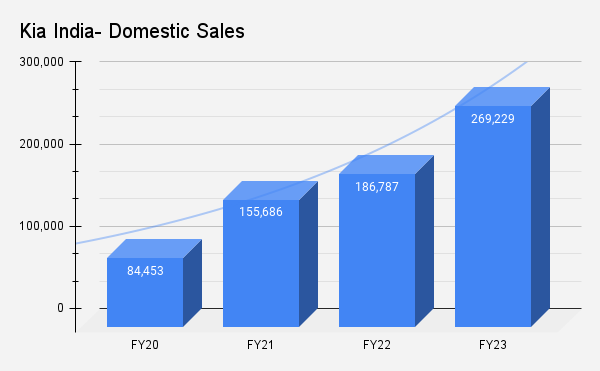
New Delhi: South Korean automaker Kia, which entered the India market in 2019 with its mid-size SUV Seltos, on Tuesday introduced the facelift of its popular model. The automaker is betting big on the India market and expects the SUV segment to lead the trend. It will open the bookings for the new Seltos from July 14.
“The Seltos has enjoyed 30% share in its segment in the last four years. We expect the mid-size SUV segment in India to grow 5% every year. There is a lot of growth potential in this segment, and the new Seltos will grow the premium end of it,” said Tae-Jin Park, Managing Director and CEO, Kia India on Tuesday.
“We have a long-term focus on the Indian market. This (Seltos) strategic launch is key to our India ambitions of attaining 10% market share soon. We will also grow our touchpoints from 300 today to over 600 by 2028,” Park said.

Since its launch in August 2019 in India, Kia has sold over half a million units of the Seltos. The company, which currently has a share of around 7% in the Indian passenger vehicle market, said Seltos is one of the biggest brands for the company worldwide. One out of every ten Kia cars sold globally is a Seltos.
Currently exporting its vehicles to about 100 countries, Kia said it will first prioritize the production of the new Seltos for the domestic market.
| Kia India | Market Share |
| FY20 | 3.1% |
| FY21 | 5.7% |
| FY22 | 6% |
| FY23 | 6.9% |
According to industry estimates, about 16.70 lakh SUVs sold in India in FY23 comprised 7.59 lakh units of the sub category mid-size SUVs. Currently, Hyundai’s 2nd gen Creta launched in March 2020 dominates the segment along with the Kia Seltos.
Other models in the segment include Maruti Suzuki Grand Vitara, Toyota Urban Cruiser Hyryder, MG Hector, Skoda Kushaq, Volkswagen Taigun, upcoming Honda Elevate, amongst others. As the competition is increasing, every automaker is making sure to mark its presence in the segment and up its ante.
Country’s largest carmaker Maruti Suzuki earlier said it expects the mid-size SUV segment in India to double in the next 3-4 years.
Electrification Plans
“We are on track with our EV strategy in India and will introduce affordable EVs in 2025,” said Myunk-Sik Sohn, Chief Sales & Business Officer, Kia India. He added that the company sees growth potential in its India operations and it will keep investing in the country.
The automaker is expected to launch a total of two EVs by 2025, which will be locally produced at its plant in Anantapur, Andhra Pradesh. It also plans to bring a ICE model in the country in the next two years.
Kia entered the EV market in India with the launch of its EV6 in June last year, which is brought in as a completely built-in unit (CBU). At the Auto Expo 2023, Kia showcased a luxury recreational vehicle (RV) KA4 and an electric SUV Concept EV9.
The Indian government has set itself a target to achieve about 30% EV sales in the country by 2030.
Hardeep Singh Brar, National Head- Sales & Marketing, Kia India believes that with the current pace of electrification, about 20-25% EV sales by 2030 in India is a reasonable number to expect, when the market touches the 5 million units mark annually. Kia is looking to garner a similar share of EVs by 2030 for itself.
Unlike the developed markets which are moving towards electrification at a faster pace, ICE vehicles are expected to co-exist for another 10-15 years, he said.
Globally, Kia plans to drive in 14 battery electric models (BEVs) by 2027. The automaker earlier stated that one of these will also be sold in India- a locally manufactured mass market electric PV to be launched in the country in 2025. It had also announced an investment of INR 2,000 crore in India for EV related R&D, manufacturing, and infrastructure development.
Increasing demand for technology
The 2023 Kia Seltos features the Level 2 ADAS, aided by three radars (1 front and 2 corner rear) and one front camera. It comes with 17 Advanced Adaptive Features. Brar stated that about 50-60% of Kia’s overall volumes come from top-end variants of the models, and about 45% of the sales are for vehicles with connected features.
“The average age of a Seltos consumer used to be about 25-35 years. Now, as more younger consumers are starting to work, the age of the customer is also reducing. For Seltos, we are now targeting 21-35 years old and above,” he said.
One of the new developments in the Seltos facelift is the 1.5L turbo petrol engine. “Last year, about 12% sales were from the 1.4 turbo petrol engine. With the new 1.5 turbo engine now, the share is expected to grow to 15-20%.”
Unlike a few other automakers, Kia is confident of sustaining the demand for diesel vehicles in the country.

















